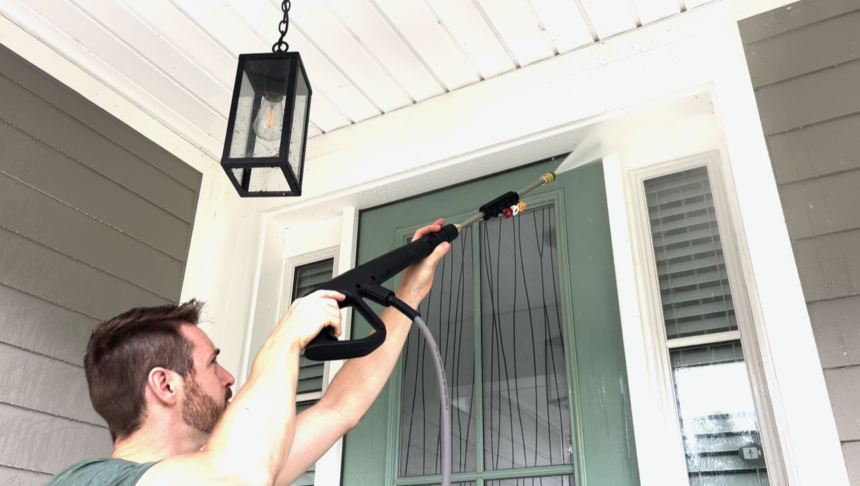Renovations can breathe new life into a home, but they also bring about a significant mess. Dust, debris, and leftover materials are just a few of the challenges homeowners face during and after a renovation project. Effective cleaning both before and after the renovation process is crucial to ensuring a smooth and successful transformation. This comprehensive guide will walk you through essential pre- and post-renovation cleaning strategies to help you maintain a pristine environment throughout your home improvement journey.
Pre-Renovation Cleaning: Preparing for the Transformation
Before embarking on a renovation project, it’s essential to prepare your space to minimize disruption and ensure the work can proceed smoothly. Here are the steps to follow for effective pre-renovation cleaning:
1. Declutter the Area
The first step in preparing for renovation is to clear out the space. Remove all furniture, decorations, and personal items from the area to be renovated. This not only protects your belongings but also provides clear access for contractors. Sort items into three categories: keep, donate, and discard. Be thorough, as this will make the post-renovation cleanup easier.
2. Cover and Protect
Even if you’ve cleared out the room, dust and debris can still affect other parts of your home. Protect your furniture and flooring in adjacent rooms by using plastic sheeting, drop cloths, or old sheets. Seal off entryways with plastic sheeting and painter’s tape to prevent dust from spreading.
3. Clean the Space
Before the renovation begins, do a thorough cleaning of the area. Dust all surfaces, vacuum the floors, and wipe down walls. This initial cleaning helps to remove any existing dust and dirt, making it easier to spot new messes that occur during the renovation.
4. Check Ventilation Systems
Renovations can stir up a significant amount of dust, which can circulate through your home’s ventilation system. Check and replace air filters before the renovation begins to prevent dust from clogging the system. Consider setting up temporary air purifiers in high-traffic areas to improve air quality.
5. Communicate with Your Contractor
Discuss cleaning and debris removal responsibilities with your contractor. Establishing clear expectations can prevent misunderstandings and ensure that both parties are on the same page regarding post-renovation cleanup.
Post-Renovation Cleaning: Restoring Your Space
Once the renovation is complete, the real cleaning work begins. The mess left behind can be overwhelming, but with a systematic approach, you can quickly return your home to its pre-renovation condition. Here’s how to tackle post-renovation cleaning effectively:
1. Remove Debris
Start by removing large debris such as discarded materials, packaging, and leftover construction supplies. Dispose of or recycle these items properly. Check with your contractor if they offer debris removal services, or arrange for a dumpster if the amount of waste is substantial.
2. Dusting and Vacuuming
Renovations often create a fine layer of dust that settles on every surface. Begin by dusting all surfaces, starting from the top and working your way down. This includes walls, ceilings, light fixtures, and shelves. Use a microfiber cloth to trap dust rather than spreading it around.
After dusting, vacuum floors thoroughly. If possible, use a vacuum with a HEPA filter to capture fine dust particles. Don’t forget to vacuum upholstery and any fabric surfaces that may have accumulated dust.
3. Clean Windows and Walls
Dust and grime often settle on windows and walls during renovations. Wash windows inside and out to remove dust, smudges, and residue. For walls, use a mild detergent solution to wipe down surfaces, paying special attention to areas around corners and edges where dust can accumulate.
4. Tackle Flooring
Flooring can be especially challenging to clean after a renovation. Depending on the type of flooring in your home, follow the appropriate cleaning method:
- Hardwood Floors: Sweep or vacuum first, then mop with a hardwood-friendly cleaner.
- Tile Floors: Sweep or vacuum, then mop with a tile cleaner. Consider using a grout cleaner for any grout lines that may have collected dust.
- Carpet: Vacuum thoroughly and consider using a carpet cleaner or steam cleaner to remove embedded dust and dirt.
5. Clean HVAC Systems
Renovation dust can easily clog air vents and HVAC systems. Replace air filters if you haven’t done so recently. Clean air vents and ducts, or hire a professional to ensure your system is free of dust and debris. This will help maintain good air quality and prevent dust from spreading through your home.
6. Address Any Residual Odors
Renovations can leave behind unpleasant odors, especially if new materials or paint were used. To neutralize these smells, ensure proper ventilation by opening windows and using fans. You can also use odor-absorbing products such as baking soda, activated charcoal, or commercial odor neutralizers.
7. Inspect and Repair
After cleaning, inspect the renovated area for any damage or imperfections that may need attention. Touch up paint, repair any minor issues, and ensure everything is in working order. Addressing these details promptly will help you fully enjoy your newly renovated space.
Tips for a Smooth Cleaning Process
- Create a Checklist: Organize your cleaning tasks with a detailed checklist to ensure you don’t miss any areas.
- Use the Right Tools: Invest in high-quality cleaning tools such as microfiber cloths, vacuum cleaners with HEPA filters, and appropriate cleaning solutions.
- Enlist Help: Don’t hesitate to ask family members or hire professional cleaners to assist with the post-renovation cleanup if the task feels overwhelming.
- Stay Safe: Wear protective gear such as masks and gloves during the cleaning process to avoid inhaling dust or coming into contact with harsh chemicals.
Conclusion
Effective pre- and post-renovation cleaning is essential for a successful home improvement project. By thoroughly preparing your space before renovations and methodically cleaning up afterward, you can ensure a smooth transition and enjoy the benefits of your newly renovated home without the stress of lingering mess and debris. Follow these guidelines to keep your home looking its best and to make the most of your renovation investment.




